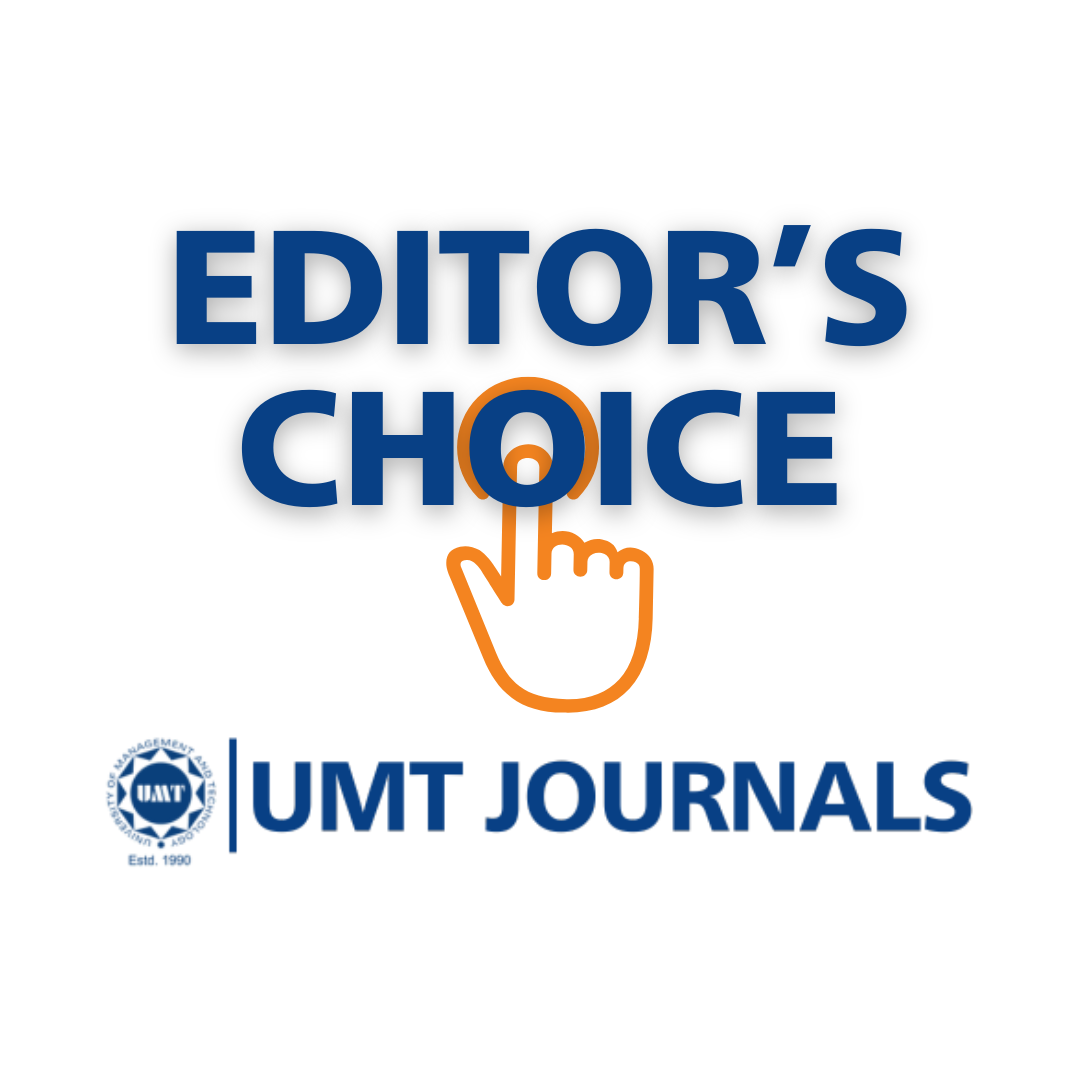Natural Synthesis of Silver Nanoparticles from Grape Fruit Juice and Estimation of Antimicrobial Activity
Abstract
 Abstract Views: 238
Abstract Views: 238
Silver has been known for its antimicrobial activity for a very long time. The formulation of silver particles that range from 1-100nm in size makes it even more potent in terms ofinducingantimicrobial effects.Green chemistry has started toinfluencethe field of biochemical research. Silver Nanoparticles(Ag-NPs)synthesized through the green synthesis method provide a cheap and ecofriendlywayof nanoparticle preparation. Theaim of the current study is to prepare the green synthesis of Ag-NPsusing tomato juice as a reducing and capping agent and the evaluation of its antimicrobial activity. The stability and conformation ofAg-NPs was determined usingUV-visible spectroscopy. The antimicrobial activity of synthesizedAg-NPs was determined against E.coli DH5α.Ultraviolet spectroscopic analysis offered peak at 400 nm whichindicatedthe production of Ag-NPs of adequate size. E.coli DH5αdecreasedconsiderably upon the introduction of Ag-NPsto the bacterial inoculum. On increasing the concentration of Ag-NPs,an increase in the zone of inhibition was recorded. For 70μg/ml of Ag-NPs the zone of inhibition was 0.5 cm, while 0.6 cm, 0.7 cm and 0.7cm wererecorded for 100μg/ml, 150μg/ml and 200μg/ml of Ag-NPs,respectively. The efficacy of the antimicrobial activity of Ag-NPsderived from tomato juice proves its potential use in pharmaceutical and medicinal industries for the synthesis of nanomedicine.
Keywords: antimicrobial effect, grapefruit, green chemistry, nanomedicine, silver nanoparticles (Ag-NPs)
Copyright (c) The Authors
Downloads
References
2. Li W.R., Xie X.B., Shi Q.S., Zeng H.Y., Ou-Yang Y.S., Chen Y.B. Antibacterial activity and mechanism of silver nanoparticles on Escherichia coli. Appl. Microbiol. Biotechnol. 2010;8:1115–1122. doi: 10.1007/s00253-009-2159-5
3. Mukherjee P., Ahmad A., Mandal D., Senapati S., Sainkar S.R., Khan M.I., Renu P., Ajaykumar P.V., Alam M., Kumar R., et al. Fungus-mediated synthesis of silver nanoparticles and their immobilization in the mycelial matrix: A novel biological approach to nanoparticle synthesis. Nano Lett. 2001;1:515–519. doi: 10.1021/nl0155274
4. Chernousova S., Epple M. Silver as antibacterial agent: Ion, nanoparticle, and metal. Angew. Chem. Int. Ed. 2013;52:1636–1653. doi: 10.1002/anie.201205923.
5. Li C.Y., Zhang Y.J., Wang M., Zhang Y., Chen G., Li L., Wu D., Wang Q. In vivo real-time visualization of tissue blood flow and angiogenesis using Ag2S quantum dots in the NIR-II window. Biomaterials. 2014;35:393–400. doi: 10.1016/j.biomaterials.2013.10.010.
6. Sondi I., Salopek-Sondi B. Silver nanoparticles as antimicrobial agent: A case study on E. coli as a model for Gram-negative bacteria. J. Colloid Interface Sci. 2004;275:177–182. doi: 10.1016/j.jcis.2004.02.012.
7. Li L., Hu J., Yang W., Alivisatos A.P. Band gap variation of size- and shape-controlled colloidal CdSe quantum rods. Nano Lett. 2001;1:349–351. doi: 10.1021/nl015559r.
8. Sharma V.K., Yngard R.A., Lin Y. Silver nanoparticles: Green synthesis and their antimicrobial activities. Adv. Colloid Interface. 2009;145:83–96. doi: 10.1016/j.cis.2008.09.002.
9. Gurunathan S., Kalishwaralal K., Vaidyanathan R., Venkataraman D., Pandian S.R., Muniyandi J., Hariharan N., Eom S.H. Biosynthesis, purification and characterization of silver nanoparticles using Escherichia coli. Colloids Surf. B Biointerfaces. 2009;74:328–335. doi: 10.1016/j.colsurfb.2009.07.048.
10. Lin P.C., Lin S., Wang P.C., Sridhar R. Techniques for physicochemical characterization of nanomaterials. Biotechnol. Adv. 2014;32:711–726. doi: 10.1016/j.biotechadv.2013.11.006.
11. Pleus R. Nanotechnologies-Guidance on Physicochemical Characterization of Engineered Nanoscale Materials for Toxicologic Assessment. ISO; Geneva, Switzerland: 2012.
12. Maedeh Sadat Mohseni, Mohammad A. Khalilzadeh, Moein Mohseni, Fariba Zamani Hargalani, Muhammad Ibrahim Getso, Vahid Raissi, Omid Raiesi, Biocatalysis and Agricultural Biotechnology, Volume 25,2020,101569,ISSN 1878-8181,doi: 1016/j.bcab.2020.101569
13. Murdock R.C., Braydich-Stolle L., Schrand A.M., Schlager J.J., Hussain S.M. Characterization of nanomaterial dispersion in solution prior to in vitro exposure using dynamic light scattering technique. Toxicol. Sci. 2008;101:239–253. doi: 10.1093/toxsci/kfm240.
14. Gurunathan S., Han J.W., Kim E.S., Park J.H., Kim J.H. Reduction of graphene oxide by resveratrol: A novel and simple biological method for the synthesis of an effective anticancer nanotherapeutic molecule. Int. J. Nanomed. 2015;10:2951–2969. doi: 10.2147/IJN.S79879.
15. R. Renuka, K. Renuka Devi, M. Sivakami, T. Thilagavathi, R. Uthrakumar, K. Kaviyarasu: Biosynthesis of silver nanoparticles using phyllanthus emblica fruit extract for antimicrobial application. Biocatalysis and Agricultural Biotechnology, Volume 24, 2020, 101567, ISSN 1878-8181,doi: 0.1016/j.bcab.2020.10156710..
16. Sapsford K.E., Tyner K.M., Dair B.J., Deschamps J.R., Medintz I.L. Analyzing nanomaterial bioconjugates: A review of current and emerging purification and characterization techniques. Anal. Chem. 2011;83:4453–4488. doi: 10.1021/ac200853a.
Copyright (c) 2021 Mehreen Fatima, Azra Quraishi, Maida Irfan

This work is licensed under a Creative Commons Attribution 4.0 International License.
BSR follows an open-access publishing policy and full text of all published articles is available free, immediately upon publication of an issue. The journal’s contents are published and distributed under the terms of the Creative Commons Attribution 4.0 International (CC-BY 4.0) license. Thus, the work submitted to the journal implies that it is original, unpublished work of the authors (neither published previously nor accepted/under consideration for publication elsewhere). On acceptance of a manuscript for publication, a corresponding author on the behalf of all co-authors of the manuscript will sign and submit a completed the Copyright and Author Consent Form.










